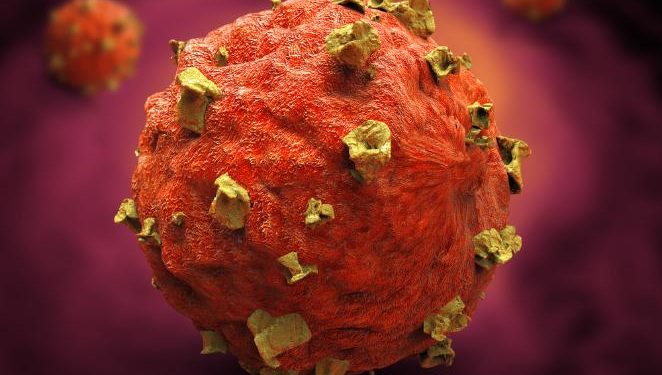Cancer is a group of diseases that develops when abnormal cells grow rapidly and disrupt the normal function of tissue and organs. These cells can also break away from their original site and travel through the bloodstream to other parts of the body.
Doctors classify cancers based on the cell type, tissue, or area where they start, as well as their genetic profile and how fast they grow. They also use terms such as stage and grading.
Basal Cell Carcinoma
Basal cell carcinoma is a tumor that grows in the lower part of your epidermis. It starts as a flat red, pink or pearly bump on the skin. It grows slowly and may be painful. It usually grows on sun-exposed areas like your face, ears or arms. It is less likely to spread (metastasize) than other types of skin cancers. But it is dangerous if not treated. If you don’t get it treated, it can grow and erode the tissue around it, destroying bone in some cases.
This is the most common type of skin cancer. It forms in the cells that produce keratin, which makes up most of your body’s outer layer, your epidermis. It’s most likely to develop in areas exposed to the sun, but it can also be caused by health conditions that increase your risk of sunburn or by certain inherited genetic disorders.
It is easy to treat basal cell carcinoma when it is caught early. You can get it cured with surgery, radiation therapy or, in more advanced cases, medicines that target the molecular disorder that promotes the growth of your tumor. Regular self-examination of your skin can help you identify any changes that might need a doctor’s attention. You should look for spots that are new, changing or bleeding. If a growth looks suspicious, make an appointment with your doctor to have it looked at under local anesthetic.
Soft Tissue Sarcoma
Soft tissue sarcoma is cancer that starts in cells that make up the body’s soft tissues, which include fat, muscle, nerves, tendons, blood vessels and the tissue around joints. It often develops as a painless lump (tumor) and can be found anywhere in the body, though it is more common in the arms and legs.
We don’t know what causes most soft tissue sarcomas, but certain factors can increase your risk of getting them. This includes having certain inherited medical conditions like von Recklinghausen disease, familial adenomatous polyposis and Li-Fraumeni syndrome; being exposed to chemicals such as vinyl chloride or high doses of herbicides (weed killers); and having previous radiation exposure.
It’s important to see your GP if you have any concerns, as they will examine you and may refer you for further tests. These can help decide the best treatment for you. They can also tell you how likely it is that the tumour will spread (the grade) and whether or not it has already done so (the stage).
Having a biopsy, which involves taking a small sample of tissue from the lump, is the only way to confirm if you have a soft tissue sarcoma. Other tests can be used to help find out if it has spread, such as a PET scan. In this test, you are injected with a radioactive solution, which can show up the cells that are releasing cancerous substances.
Lung Cancer
Cancers that start in your lungs usually begin in the cells that line the airways (bronchi and bronchioles) or in the small air sacs (alveoli). Sometimes, those cells get changes (mutations) that make them keep growing and making more copies of themselves when they shouldn’t. The extra cells can create masses, or tumors, that keep your lungs from working properly.
There are 2 main types of lung cancer, nonsmall cell and small cell. Nonsmall cell lung cancer (NSLCLC) includes adenocarcinoma, squamous cell carcinoma and large cell carcinoma. It also includes other rare types such as adenosquamous carcinoma and sarcomatoid carcinoma. Small cell lung cancer (SCLC) is less common and tends to spread faster. It starts in cells that line the bronchi, the large airways that branch out from your windpipe into the lungs. It’s most often found in people who smoke and it accounts for about 10-15% of all cases.
Lung cancers are often discovered when a doctor finds a lump in the lungs during a chest x-ray for another reason. Your healthcare provider may then do other tests to find out what type of lung cancer you have and how far it has spread in your lungs and to other parts of the body. They will also look at the genes of your cancer to see if there are any specific mutations that help it grow and spread. This information helps your provider choose the best treatment for you.
Colorectal Cancer
Colorectal cancer is a type of tumor that forms in the inner lining of the colon and rectum. It’s the third leading cause of cancer deaths in men and women, but death rates from colorectal cancer have been falling because of better screening.
Like other types of cancer, the causes of colorectal cancer aren’t completely understood. But genetic changes and some lifestyle factors are thought to play a role. Having a family history of colorectal cancer or inflammatory bowel diseases such as Crohn’s disease and ulcerative colitis increase your risk. Getting older also increases your risk of colorectal cancer because, as you age, the cells in your colon and rectum can become precancerous or develop into cancer.
The best way to prevent colorectal cancer is to find and remove precancerous polyps. Polyps are growths that can form into a cancer, and they’re usually found by screening tests such as a colonoscopy. Screening can also help find cancer early when it’s easier to treat. Doctors are studying new screening tests to find ones that offer the most benefits and fewest harms.
Breast Cancer
Breast cancer is the most common form of cancer in women. It can be found as a lump in the breast, or it may spread to nearby tissue or other parts of the body. There are 3 main types of breast cancer. Doctors find out which type you have by doing specific tests on a sample of your tumor. This information helps them recommend a treatment plan.
Noninvasive cancers start in the milk ducts or in the glands (called lobes) that produce milk. Invasive ductal carcinoma is the most common type. It starts in the ducts and then grows into the surrounding breast tissue. Invasive lobular carcinoma is less common. It starts in the lobules and then spreads to the surrounding breast tissue.
Other types of invasive breast cancer include papillary carcinoma, which has finger-like growths on the surface of the tumor cells; cribriform carcinoma, which has a pattern of holes in the cancer cells and is less common; and tubular carcinoma, which gets its name from the tube-like structure inside the cancer cells. Only about 5% of all breast cancers are these types.
Some breast cancers are caused by a change (mutation) in one of the genes BRCA1 or BRCA2. These genes help control how fast cancer cells grow. Mutations in these genes increase a woman’s risk of getting breast cancer or the chances of the cancer spreading.
Ovarian Cancer
Ovarian cancer occurs when abnormal cells develop in the ovary. These cells grow and divide more quickly than normal cells and can spread to other tissues in the body. Cancer that has spread to other parts of the body is called advanced or metastatic cancer.
There are two main types of ovarian cancer: epithelial and stromal tumors. Most ovarian cancers are epithelial tumors and originate in the ovary or fallopian tube. Some epithelial tumors, such as benign epithelial tumors, do not grow fast and do not cause symptoms. Benign tumors may be removed surgically.
The other type of ovarian tumor is a stromal tumor, which can be either low- or high-grade. The growth pattern and how rapidly the tumor grows determines its grade. Tumors that grow slowly and look more like normal tissue have a lower grade and a better prognosis. Tumors that grow faster and do not look like normal tissue have a higher grade and a poorer prognosis.
Stromal tumors are categorized into four subtypes: serous carcinoma, endometrioid carcinoma, clear cell carcinoma and mucinous carcinoma. Each subtype has its own molecular characteristics and treatment strategies.
There are several types of ovarian cancer treatments, including chemotherapy, surgery, hormone therapy and radiation. Chemotherapy uses drugs to kill cancer cells or stop them from growing. Hormone therapy reduces the production of certain hormones that can stimulate the growth of tumors. Radiation therapy uses X-rays or other forms of energy to destroy cancer cells and the surrounding tissue.









